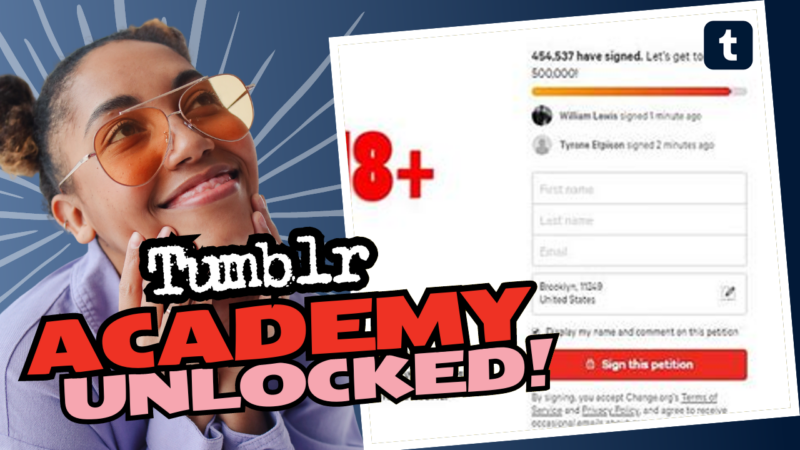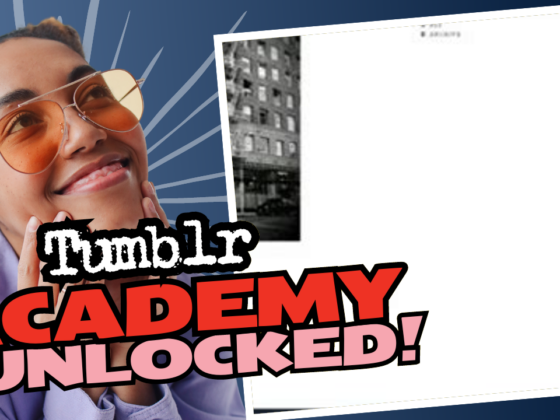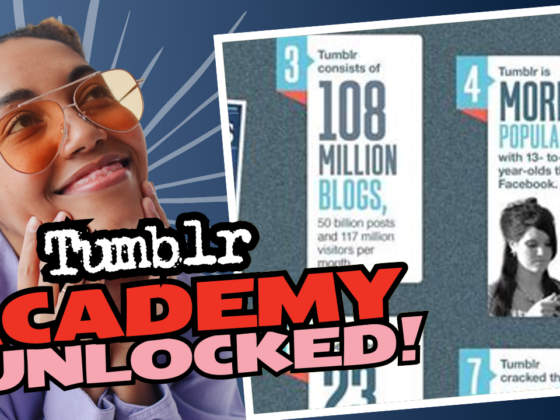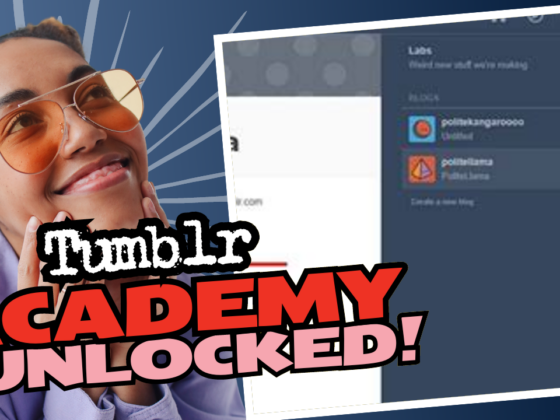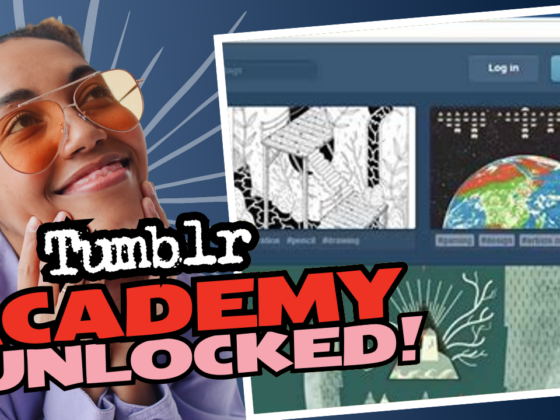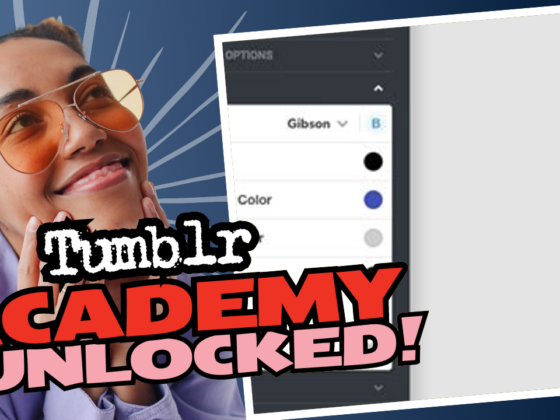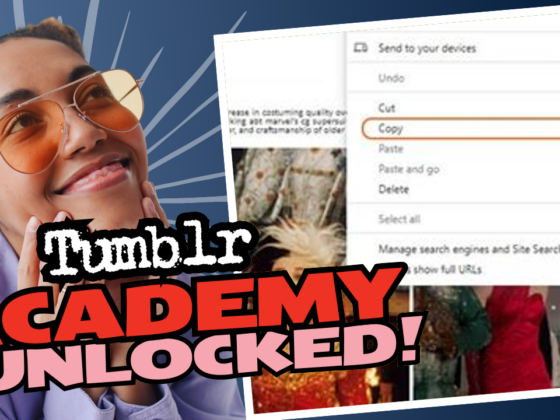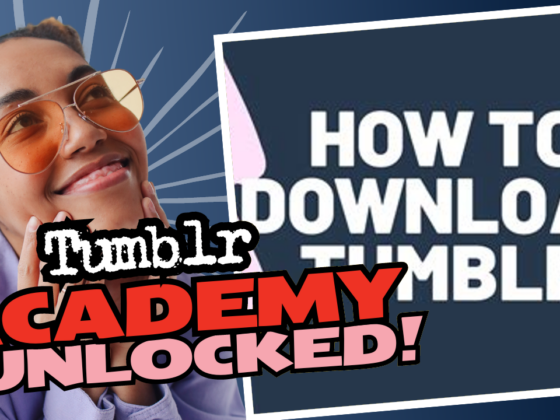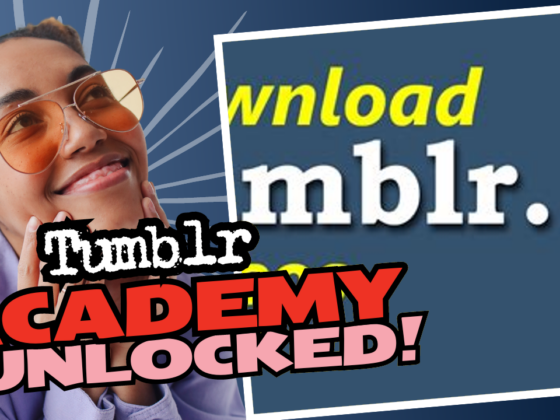Why Did Tumblr Ban NSFW Content?
Ah, Tumblr. The wild, wacky world of animated GIFs, quirky blogs, and, oh yes—adult content! Once a haven for the creatively uninhibited and the genuinely bizarre, it has shuffled through several dramatic transformations. One such transformation culminated in a significant and highly controversial move: the ban on NSFW (Not Safe For Work) content. Why did it happen? Oh, let’s break this down, shall we?
The Perfect Storm: Scandals and Scandals
First, let’s talk about the elephant in the room: the sheer amount of inappropriate content, particularly child pornography, that plagued the platform. Trust me; this isn’t a light topic. Tumblr was swimming in a cesspool of illegal content while simultaneously hanging an enormous “We Don’t Tolerate This” banner. This illusion started popping more bubbles than a toddler in a champagne-filled kiddy pool.
However, they weren’t just battling against illegal content; they also had a pesky intruder—NSFW scam bots. Have you ever met a scam bot that plays nice? Nope! They relentlessly flooded users’ feeds with links to sketchy dating sites. This was the digital equivalent of wearing a “Kick Me” sign while standing in a crowded bar. Users started becoming increasingly vocal about their frustrations, leading to calls for action. And then, out of nowhere, enter Tumblr’s reluctant executive decision-makers, shuffling in wearing their “we-should-have-done-something-sooner” caps.
The Final Straw: Apple and Google Get Involved
Here’s where things get spicy: Apple decided it no longer wanted to associate with the tumultuous relationship Tumblr had become known for. They took down Tumblr’s app from the App Store—a move that sent shockwaves through the community. You simply do not mess with Apple’s customer base, especially when they are a solid chunk of your viewership. Google’s specter loomed just behind, making plans to do the same.
If you’re scratching your head wondering how this escalates into a full-blown ban, look no further! Faced with losing their audience and income, Tumblr took action by implementing an algorithm that targeted NSFW material indiscriminately—like an overzealous bouncer throwing out anyone in leather and spikes, whether they’re dressed for a punk concert or a fetish party. The results? Artists and creators, who relied on NSFW content to express themselves and serve their following, suddenly found themselves removed from the platform.
The Repercussions of the Ban
Even after the dust began to settle, the fallout of the ban was anything but pretty. Many users who had established artistic careers on Tumblr were thrown into chaos as their posts gradually disappeared from users’ dashboards. As the ban rolled out, it seemed Tumblr unveiled yet another level of confusion. Turns out, there were three tiers established for the new content categorization:
- SFW – Safe for work content that plays nice with everyone and can be easily found.
- NSFW – Minor nudity allowed, with strict limitations—think breastfeeding, but not your favorite anime character in compromising positions!
- ADULT – Content that goes completely private. Good luck trying to build an audience with this one!
A Loss for Artists and Users Alike
The seismic shift in policy essentially robbed a massive community of artists of their voices. You name the niche—furries, hentai, the whole shenanigan—and each faced considerable backlash as their reach and visibility dwindled. It’s akin to being told you won’t be performing your groundbreaking show because a few hecklers shouted inappropriate things. The creativity? Snuffed out.
Adult Film Gone Wrong: Was this the Right Move?
Now, let’s get into the nitty-gritty of whether this decision was a good one or simply a corporate panic move. Some argue that Tumblr’s approach to content moderation has been nothing short of an embarrassing circus. Even more alarming? The staff notoriously handled complaints about child porn in the most apathetic way possible, letting many posts remain on their site for far too long. Users noted that some of these vile images could clock thousands of reblogs before being addressed. Utter madness, if you ask me.
One could argue that Tumblr needed a radical overhaul of their reporting system. The existing system was as subtle as a giant neon sign flashing “We don’t care.” I mean, the reporting feature was a labyrinthine nightmare. Could you effectively report inappropriate content while feeling comfortable? Hell, no!
- To report child pornography, users had to click the SHARE button first. I mean, who was the genius behind that? If I see something illegal, I certainly don’t want to hit share on it, no matter what reward comes next!
- Another fun twist? Posts where inappropriate images were removed often left behind a barren landscape of empty frames, inviting pedophilic activity—not exactly a deterrent, fellas!
That leads us to a pressing question: Is it moral or ethical to nuke all NSFW content when the real epidemic was child exploitation? Or is Tumblr simply taking the path of least resistance because cleaning house would require serious work?
Cheers to Karma: The Mixed Bag of the Community Reaction
The community’s response? An uproar of epic proportions! Many users bounced from the platform, citing that the ban strips away freedom of expression. Meanwhile, others applauded the steps towards safeguarding minors, essentially saying, “Better safe than sorry.” But while they tried to wipe off the grime, many prominent creators, artists, and enthusiasts faced an uphill battle transitioning to alternate platforms.
Do you feel like switching to a new platform? How about Twitter, Reddit, or perhaps OnlyFans? Yes, some users gleefully ran to alternative spaces, but let’s face it: the balance between sexual expression and legitimate concerns about child safety made finding a new home an exercise in frustration.
Choosing Sides: Who Wins?
In this back-and-forth tug of war, we ask ourselves: Who truly came out ahead? It was almost like a game of dodgeball where the schoolyard bullies saw an opening and knocked everyone out for their own agendas. The artists, advocates, and legitimate creators lost their outlets while clandestine operations and rogue elements might simply shift to darker corners of the internet — effectively, leaving the very issues Tumblr aimed to combat untouched.
Furthermore, the ban may have reduced immediate liability for the company. After all, by putting the spotlight squarely on NSFW content, the child exploitation elephant left the room! But let’s be honest: is playing musical chairs with community standards a fun long-term solution? Nope!
The Takeaway: Is It Over for Tumblr?
While a certain grin forms over their decision, a lingering question remains: Is Tumblr giving up on its roots or merely adapting to a flawed world? Yes, they cling to their chronological format that’s adored when other sites follow the algorithm route. But in doing so, Tumblr has carved out a niche as a safe haven for users swerving around on the edge of acceptable content.
While the veil of NSFW optimization was pulled, it has left important conversations about sexuality, mental health, and art muddled in frustration. Presently, many creatives are reaching for the obscured light at the end of this tunnel, one Twitter hashtag at a time.
In Conclusion: Will We Ever Find Peace?
You may wonder, why write such a lengthy monologue about a ban? Well, it’s not just about the content but what that content means for a community built on community, expression, and wild creativity. Whether or not Tumblr bounces back remains a mystery.
So, whether you’re disheartened, celebrating, or just confused, know one thing: Tumblr’s future hinges on its ability to evolve. And evolution isn’t just about deleting a few accounts—it’s about making a lasting change that ensures a safe community for ALL! Who knows? Perhaps on the other side of this shipwreck lies something magnificent!
Until then, stay safe, stay playful, and let’s keep the conversation going—because every voice matters!

